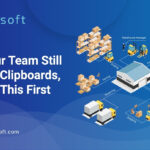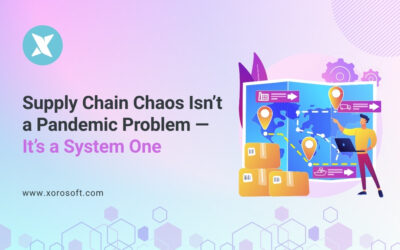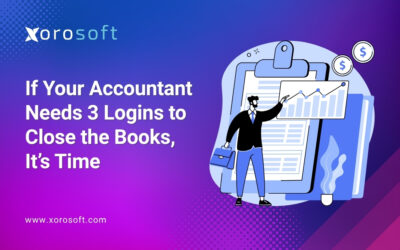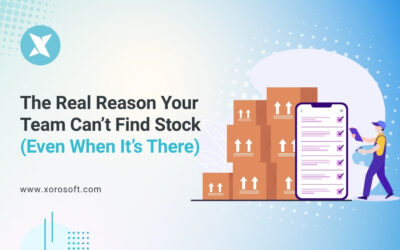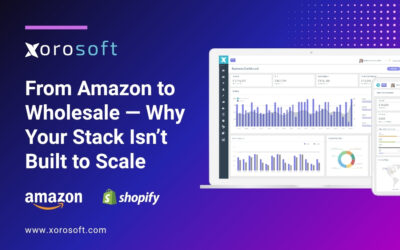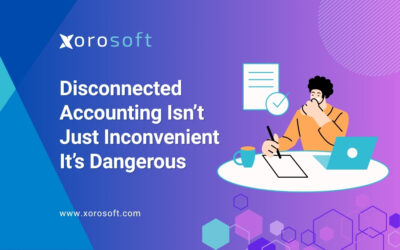
Introduction to ERP systems
In today’s fast-paced business environment, organizations are constantly seeking ways to optimize their operations, increase efficiency, and reduce costs. One tool that has proven to be invaluable in achieving these goals is an Enterprise Resource Planning (ERP) system. An ERP system is a comprehensive software solution that integrates various business processes and functions into a single platform, providing real-time visibility and control over operations. When it comes to asset management, implementing an ERP system can revolutionize the way organizations track, maintain, and utilize their assets.
The benefits of implementing an ERP system for asset management
Implementing an ERP system for asset management offers a wide range of benefits for organizations. First and foremost, it provides a centralized repository for all asset-related data, which eliminates the need for multiple systems and spreadsheets. This not only saves time but also ensures data accuracy and consistency. With an ERP system, organizations can easily track the entire lifecycle of their assets, from acquisition to disposal, enabling them to make informed decisions regarding maintenance, repair, and replacement.
Additionally, an ERP system streamlines asset tracking and maintenance processes, reducing the risk of equipment failure and downtime. By automating maintenance schedules and tracking asset performance, organizations can proactively identify and address potential issues before they become costly problems. This not only improves operational efficiency but also extends the lifespan of assets, resulting in significant cost savings in the long run.
How an ERP system optimizes efficiency and cost savings
One of the key ways an ERP system optimizes efficiency and cost savings in asset management is through streamlined inventory management. With an ERP system, organizations can accurately track and manage their inventory levels in real-time. This eliminates the need for manual inventory counts and reduces the risk of stockouts or overstocks. By maintaining optimal inventory levels, organizations can minimize carrying costs, reduce waste, and improve overall operational efficiency.
Another area where an ERP system can drive efficiency and cost savings is in accounting processes. Traditional accounting methods often involve manual data entry, which is not only time-consuming but also prone to errors. With an ERP system, organizations can automate their accounting processes, including asset depreciation calculations, asset valuation, and financial reporting. This not only saves time but also improves data accuracy and enables organizations to make more informed financial decisions.
Key features of an ERP system for asset management
When selecting an ERP system for asset management, there are several key features to consider. Firstly, it should have robust asset tracking capabilities, allowing organizations to easily locate and monitor their assets at any given time. This includes features such as barcoding, RFID tracking, and asset history tracking.
Secondly, an ERP system should offer comprehensive maintenance management functionalities. This includes the ability to schedule and track maintenance tasks, generate work orders, and manage service contracts. Predictive maintenance capabilities, such as condition-based monitoring and asset performance analytics, are also desirable features that can help organizations optimize asset maintenance and reduce downtime.
Lastly, integration with other business functions is crucial for an ERP system. This includes integration with procurement, finance, and human resources, allowing for seamless data flow and collaboration across departments. Additionally, integration with mobile devices enables field staff to access asset data and perform tasks on the go, further enhancing operational efficiency.
Case study: Xorosoft ERP solution for asset management
One ERP solution that has gained significant recognition in the field of asset management is the Xorosoft ERP system. Xorosoft offers a comprehensive suite of asset management functionalities, designed to help organizations optimize efficiency and cost savings.
Xorosoft ERP provides a centralized asset database, allowing organizations to track and manage their assets from a single platform. The system offers advanced asset tracking capabilities, including barcode scanning and RFID technology, ensuring accurate and real-time asset data.
In addition to asset tracking, Xorosoft ERP also offers robust maintenance management functionalities. Organizations can easily schedule and track maintenance tasks, generate work orders, and manage service contracts. The system also provides predictive maintenance capabilities, leveraging asset performance analytics to proactively identify maintenance needs and optimize asset performance.
Furthermore, Xorosoft ERP seamlessly integrates with other business functions, such as procurement and finance. This enables organizations to streamline their operations and achieve a higher level of efficiency and collaboration. The system also offers mobile integration, allowing field staff to access asset data and perform tasks remotely, reducing response times and improving customer satisfaction.
Streamlining inventory management with an ERP system
Inventory management is a critical aspect of asset management, and an ERP system can significantly streamline this process. With an ERP system, organizations can automate inventory tracking, ensuring accurate and real-time visibility of stock levels. This eliminates the need for manual inventory counts and reduces the risk of stockouts or overstocks.
Furthermore, an ERP system can optimize inventory replenishment by implementing automated reorder points and lead times. By setting up these parameters, organizations can ensure that they have the right amount of inventory on hand at all times, minimizing carrying costs and reducing the risk of stockouts. This not only improves operational efficiency but also enhances customer satisfaction by ensuring timely order fulfillment.
Additionally, an ERP system can provide valuable insights into inventory performance and demand patterns. By analyzing historical data, organizations can identify trends and make data-driven decisions regarding inventory planning and forecasting. This helps organizations optimize their inventory levels, reduce waste, and improve overall supply chain efficiency.
Enhancing accounting processes with an ERP system
Accounting is another area where an ERP system can have a significant impact on efficiency and cost savings. Traditional accounting methods often involve manual data entry, which is not only time-consuming but also prone to errors. With an ERP system, organizations can automate their accounting processes, reducing the risk of errors and saving valuable time and resources.
An ERP system can automate asset depreciation calculations, ensuring accurate and consistent financial reporting. This eliminates the need for manual calculations and reduces the risk of errors or miscalculations. Additionally, an ERP system can provide real-time visibility into asset values, enabling organizations to make informed financial decisions regarding asset acquisition, maintenance, and disposal.
Furthermore, an ERP system can streamline financial reporting by generating comprehensive reports and statements. This includes balance sheets, income statements, and cash flow statements, among others. By automating the reporting process, organizations can save time and resources, enabling finance teams to focus on more strategic activities.
Choosing the right ERP system for your business
When it comes to selecting an ERP system for asset management, there are several factors to consider. Firstly, organizations should evaluate their specific needs and requirements. This includes considering the size and complexity of their asset portfolio, as well as their industry-specific regulations and compliance requirements.
Secondly, organizations should carefully evaluate the features and functionalities offered by different ERP systems. This includes assessing the system’s asset tracking capabilities, maintenance management functionalities, and integration capabilities with other business functions. It is also important to consider the system’s scalability and flexibility, ensuring that it can grow and adapt to future business needs.
Additionally, organizations should consider the implementation and training requirements of the ERP system. This includes evaluating the vendor’s implementation methodology, training programs, and ongoing support services. It is important to choose a vendor that has a proven track record of successful implementations and provides comprehensive training and support to ensure a smooth transition to the new system.
Implementation and training considerations for an ERP system
Implementing an ERP system for asset management is a complex process that requires careful planning and execution. To ensure a successful implementation, organizations should follow a structured methodology that includes several key steps.
Firstly, organizations should conduct a thorough assessment of their current asset management processes and identify areas for improvement. This includes evaluating existing systems, data quality, and process inefficiencies. The findings from this assessment will serve as the foundation for the new system’s design and configuration.
Secondly, organizations should collaborate with the ERP vendor to design and configure the system to meet their specific needs. This includes defining data structures, workflows, and user roles. It is important to involve key stakeholders from different departments to ensure that the system meets the needs of all users.
Once the system is designed and configured, organizations should conduct comprehensive testing to ensure that it performs as expected. This includes testing different scenarios and workflows to identify and resolve any issues or bugs. User acceptance testing should also be conducted to ensure that the system meets the needs and expectations of end-users.
Lastly, organizations should develop and execute a robust training program to ensure that users are proficient in using the new system. This includes providing both technical and process training, as well as ongoing support and resources. It is important to involve end-users in the training design and delivery to ensure that it is relevant and effective.
Conclusion: Embracing the power of an ERP system for asset management
In conclusion, implementing an ERP system for asset management can revolutionize the way organizations track, maintain, and utilize their assets. By providing a centralized platform for asset data, streamlining processes, and integrating with other business functions, an ERP system optimizes efficiency and cost savings. From streamlined inventory management to enhanced accounting processes, the benefits of an ERP system are numerous.
When selecting an ERP system for asset management, organizations should consider their specific needs and requirements, evaluate the features and functionalities of different systems, and carefully plan the implementation and training process. By embracing the power of an ERP system, organizations can unlock the full potential of their assets and achieve a higher level of efficiency and cost savings.
To learn more about how Xorosoft ERP can revolutionize your asset management processes, book a demo today. Experience the power of a comprehensive asset management solution that offers advanced tracking capabilities, robust maintenance management functionalities, and seamless integration with other business functions. Embrace the future of asset management with Xorosoft ERP.
Book a Demo with Xorosoft to explore how their ERP solution can benefit your organization’s service management needs.

